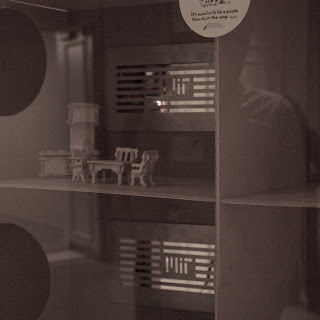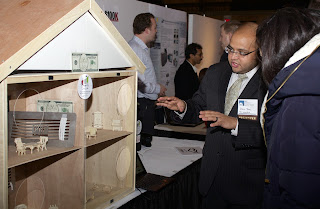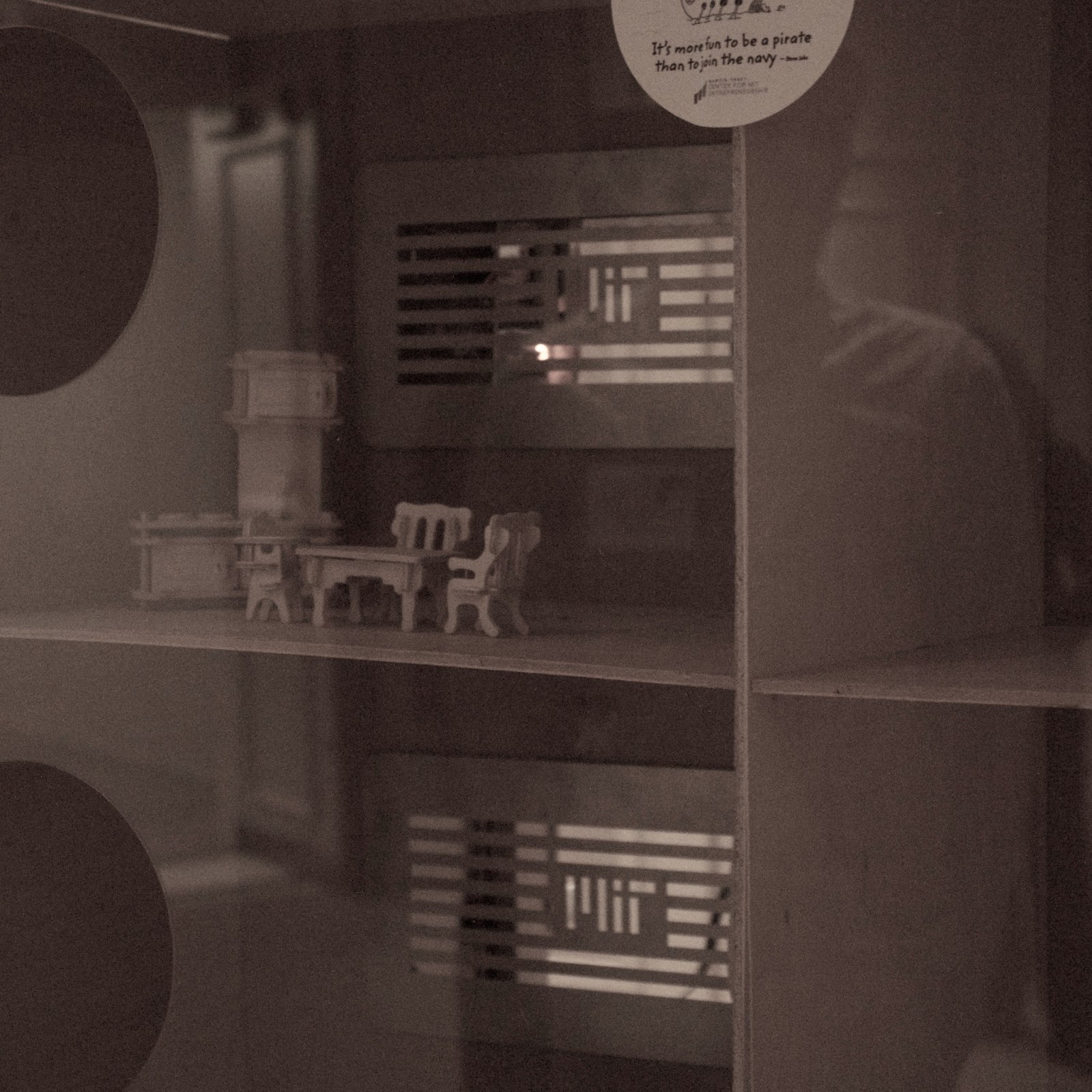Whenever it gets cold outside, my room’s heat just gets magically sucked out through my exterior wall and window. My Indian roommate has it even worse – she has two exterior walls and windows. These are times when we beg our American roommate, who has the interior room with the thermostat, to turn up the heat. And because she’s the only one who isn’t from a hot climate and doesn’t get cold easily, she has to turn the air-conditioning on in her room to prevent herself from melting while my Indian roommate and I try to prevent our blood from freezing in our fingers. Best – or worst, depending how you look at it – part, our heat and hot water is free, so we don’t even get a monetary pinch.
So I was intrigued when I went to the Friday night showcase of the 2013 MIT Energy Conference a few weeks ago and saw the ecoVent Systems display. There was a little model of a house with four compartments, and each compartment was held at a different temperature.

As Dipul Patel, an MIT graduate student and one of the ecoVent developers, pointed out, the heating system in a typical residential home or apartment building simply leaves all of the vents fully open for hot air to flow out. There is no mechanism to account for the difference in air flow from each vent, and no easy way to adjust each vent’s opening to control the amount of hot air it’s spewing. There are settings available for manual adjustments, but that would involve fiddling with each vent separately until you get the right amount of hot air. I like to imagine my current apartment’s heating system as a blind person who can’t see if his audience is hearing him, so he just keeps shouting at the top of his lungs in every direction.
What ecoVent does, is to give the apartment’s blind heating system eyes and a brain for central communication so that it now knows where it needs to heat and where not to. Patel’s team developed vents with built-in wireless communications that can be controlled by an application on a computer, tablet or smartphone. A home-owner or resident, like me, can create ‘zones’ in the application with different temperatures. For example, I would like my room to be at 80 degrees while my American roommate would probably always like her room to be at 70. Within each room, there will be temperature sensors, very much like night-lights, that ‘see’ the temperature of the room, report back to the application wirelessly and the application will ‘tell’ the vents to open up or send the hot air elsewhere.

According to Patel, ecoVent has just been proven in their little prototype, and their team is currently working on testing in real residential homes. Although they have yet to work out the finer details of product cost, marketing and availability, Patel envisions a product that will be close to 75 percent cheaper than any current solutions for creating multiple temperature zones in a home, and pays for itself in energy savings within two to three years.
Having lived through my first winter in Boston in a leaky and blind apartment, I was very glad to find that someone was working on apartment heating efficiency. In fact, last month, the mayor Thomas Menino just announced plans for cracking down on building efficiency in Boston. Even though I can still turn up the heat and not feel pain in my wallet, our situation right now of having to blast the heat to warm the exterior rooms and turn the air-conditioning on to cool the interior room is downright stupid. For next winter, I might just do as Patel recommended – get insulation for my window. But hopefully, ecoVent will be available in stores by then.
